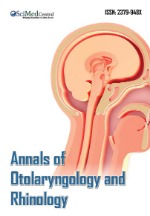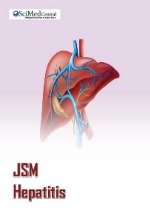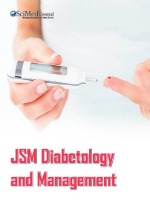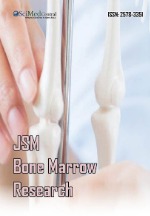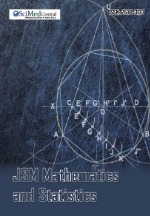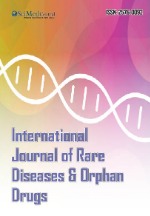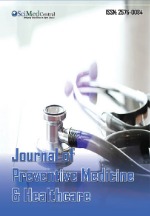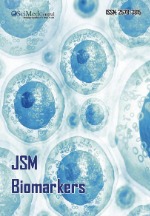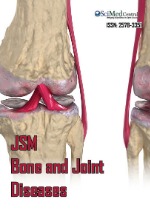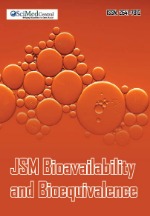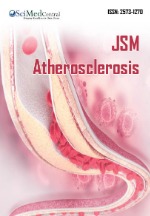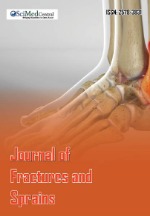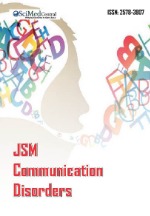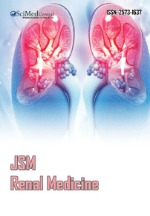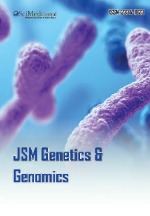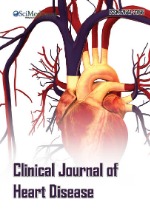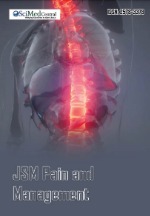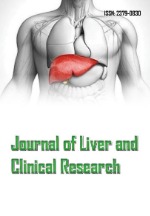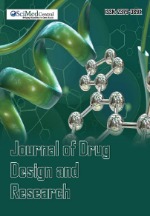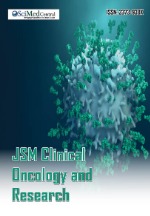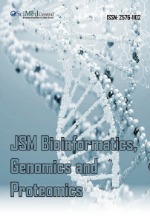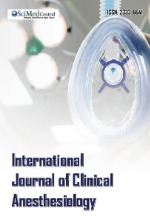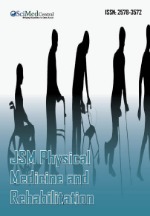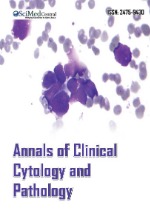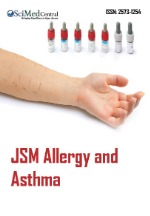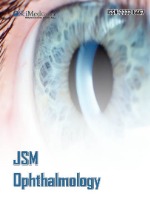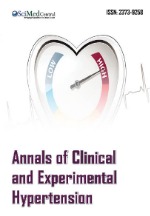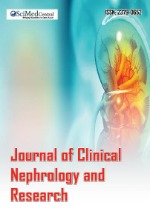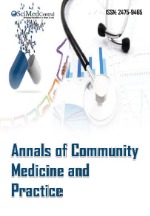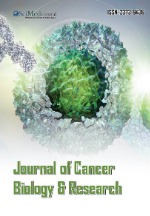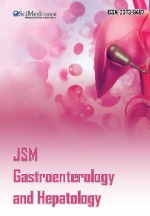Anticoagulation Stewardship: Appropriate Use of Apixaban and Rivaroxaban Factor Xa Levels in the Emergency Department
- 1. Medicine/Anticoagulation Stewardship Clinical Pharmacist at NYC Health and Hospital, USA
- 2. Anticoagulation Stewardship Director and PGY-2 Thrombosis and Hemostasis Management Residency Program Director at Sanford USD Medical Center, USA
- 3. Senior Pharmacist at Sanford USD Medical Center, USA
- 4. Clinical Pharmacist at Sanford USD Medical Center, USA
Abstract
Purpose: This study was conducted to further evaluate and improve antithrombotic stewardship efforts and decrease perceived overutilization of FXai levels in the emergency department at our institution.
Summary: A retrospective chart review was completed for patients seen in the emergency department of a 545-bed tertiary care referral center, between July 1, 2022, to June 30, 2023. The primary outcome was determining the appropriateness of ordering a factor Xa inhibitor (FXai) level based on a previously defined list of potential appropriate indications for testing. Once this primary review was completed, the investigator reviewed the clinical utility of the list and if the levels meaningfully contributed to overall patient care. When this secondary review was completed, a revised list of appropriate indications for FXai testing in the emergency department was developed and utilized to create an algorithm for appropriate FXai utilization. Patients had a mean age of 70 years old and 57% of patients were male. Most patients were anticoagulated for atrial fibrillation, 61%. For the primary outcome, 69 (57%) FXai levels were considered appropriate based on the initial appropriateness criteria. After the list of appropriate indications for levels was updated, the secondary analysis found that only 14 (11%) FXai levels met the new appropriateness criteria.
Conclusion: This study led to the development of an appropriate use algorithm for ordering FXai levels in the emergency department.
Prospective validation of the algorithm is needed.
Keywords
• DOAC levels
• DOAC monitoring
• Anticoagulation stewardship
• Emergency department
Citation
Quran FH, Gulseth M, Martin A, Zochert S (2025) Anticoagulation Stewardship: Appropriate Use of Apixaban and Rivaroxaban Factor Xa Levels in the Emergency Department. J Pharmacol Clin Toxicol 13(1):1188.
BACKGROUND
Direct oral anticoagulants (DOACs), including Factor Xa inhibitors (FXai), are the preferred first-line anticoagulants for most indications. Advantages include a wide therapeutic index, minimal dosing changes, and no routine monitoring of therapeutic effect [1].While some institutions have the ability to obtain FXai drug levels, the utilization of these levels in clinical practice remains controversial.
Recent articles have suggested potential indications for DOAC levels. These include emergency situations such as trauma, urgent surgery/invasive procedures, major bleeding, overdose, and acute thrombosis. Other
potential indications include renal failure, liver failure, and potential drug–drug interactions [2-5]. However,other published data state that levels are not routinely needed [6]. Overutilization of FXai levels in our emergency department was suspected, so a stewardship project was created to evaluate appropriateness. The study objective was to standardize a list of appropriate indications of when to order apixaban and rivaroxaban anti-Xa levels in the emergency department.
METHODS
Design
This was a retrospective chart review of the electronic medical record for patients seen in the emergency department of a 545-bed tertiary care referral center, between July 1, 2022, to June 30, 2023. Patients were eligible for inclusion if they were 18 years of age or older and had an apixaban or rivaroxaban level drawn in the emergency department. Pregnant patients were excluded from this analysis. Edoxaban and dabigatran etexilate
patients were not included in this analysis due to the hospital not having calibrated levels available and low utilization of these DOACs.
Baseline demographic data was collected. Other data collected included: apixaban or rivaroxaban anti-Xa level, indication for apixaban or rivaroxaban anti-Xa level, medication reconciliation status, renal dysfunction, and
hepatic dysfunction.
The primary outcome was determining the appropriateness of ordering a FXai level based on a previously defined list of appropriate indications for testing. After a review of the scientific literature, the following indications were considered appropriate prior to initiation of chart review: trauma, urgent surgery/ invasive procedures, major bleeding, overdose, acute thrombosis, acute kidney injury (defined as ≥0.3 mg/dL in the serum creatinine level compared with baseline), acute liver dysfunction (defined as transaminases 3 times the upper normal reference level), adherence/compliance, and significant drug-drug interactions [2-5].
Once this primary review was completed, the investigator reviewed the clinical utility of the list and if the levels meaningfully contributed to overall patient care. This was subjective in nature and based on chart review by the investigator. When this secondary review was completed, a revised list of appropriate indications for FXai testing in the emergency department was developed. When completed, a secondary analysis review was conducted
on whether the FXai level was appropriate versus inappropriate based on the new criteria. Prespecified secondary outcomes included financial impact of lab ordering and how anticoagulation was managed after the level.
All apixaban and rivaroxaban levels were anti-Xa results, the site used the STA-R Evolution analyzer, and the STA Liquid Anti-Xa kits from Diagnostica Stago, Inc. utilizing research based apixaban and rivaroxaban calibrators. Protime/INR values utilized Stargo Neoplastine CI Plus 10 reagent on the STA R MAX hemostasis analyzer. This study was reviewed and approved by the hospital’s Institutional Review Board.
RESULTS
There were 122 patients who met the inclusion criteria. Of the 122 patients with levels identified, 82 were apixaban and 40 were rivaroxaban anti-Xa levels. There were no patients that met the exclusion criteria.
The baseline demographics are stated in Table 1.
Table 1: Baseline Characteristics
|
Baseline Characteristics (n=122) |
|
|
Age (mean) |
70 years |
|
Sex (female) |
53 (43%) |
|
Acute kidney injury on arrival |
26 (21%) |
|
Liver dysfunction on arrival |
11 (9%) |
|
Anticoagulation Indications |
|
|
Atrial fibrillation |
75 (61%) |
|
Venous Thromboembolism |
41 (34%) |
|
Other |
6 (5%) |
|
Factor Xa Inhibitor |
|
|
Apixaban |
82 (67%) |
|
Rivaroxaban |
40 (33%) |
|
FXai Level Indication |
|
|
Adherence/Compliance |
44 (36%) |
|
Urgent Invasive procedures/surgeries |
32 (26%) |
|
Major Bleeding |
30 (24%) |
|
Acute Thrombosis |
11 (9%) |
|
Trauma |
2 (2%) |
|
Acute kidney injury |
2 (2%) |
|
Overdose |
1 (1%) |
|
Significant Drug-Drug Interaction |
0 |
|
Liver Dysfunction |
0 |
Patients had a mean age of 70 years old and 57% of patients were male. Most patients were anticoagulated for atrial fibrillation, 61%. Low numbers of patients had acute kidney injury (26%) or acute liver dysfunction (9%). Indications for ordering a FXai level are shown in Table 1. The most common indication was assessment of adherence/compliance, which occurred in 44 patients (36%). Only 34 (28%) of patients had complete medication reconciliation with a known date and time of last FXai prior to admission.
For the primary outcome, 69 (57%) FXai levels were considered appropriate based on the initial appropriateness criteria (Table 2).
Table 2: Outcomes
|
Primary Outcome: |
|
|
Initial Assessment of Factor Xa Levels (Appropriate versus Inappropriate) |
|
|
Appropriate |
69 (57%) |
|
Inappropriate |
53 (43%) |
|
Secondary Outcomes: |
|
|
Investigator Assessment of Factor Xa Levels (Appropriate versus Inappropriate) |
|
|
Appropriate |
14 (11%) |
|
Inappropriate |
108 (89%) |
|
Management of Anticoagulation After Result |
|
|
FXai held until outpatient follow-up |
6 (5%) |
|
Change in FXai dose |
4 (3%) |
|
FXai dose continued |
79 (65%) |
|
FXai discontinued |
22 (18%) |
|
Patient death |
11 (9%) |
After the list of appropriate indications for levels was updated, the secondary analysis found that only 14 (11%) FXai levels met the new appropriateness criteria. This improved appropriateness criteria is shown in Figure 1.
Figure 1: Proposed Algorithm
In regard to financial impact, there were 108 (89%) FXai levels that were considered inappropriate with a potential cost avoidance of $3,233. The secondaryanalysis of patient outcomes is shown in Table 2. A majority of patients, 65%, continued on the same FXai dose, however 26% had a dose change, discontinuation of the medication, or had the medication held until outpatient follow up.
DISCUSSION
This study was launched to further improve antithrombotic stewardship efforts and decrease perceived overutilization of FXai levels at our institution. Obtaining FXai levels is usually discouraged due to the lack evidence; however, some data has suggested potential utility. One study investigated plasma concentrations of rivaroxaban in relation to patients presenting with hemorrhages or thrombosis. Patients presenting with outof-range concentrations had more bleeding or thrombus when compared to patients with expected concentrations. Patients with bleeding were found to have concentrations beyond the ninety-five percentiles, however patients with
thrombosis were more likely to have concentrations below the fifth percentile [1].
During the application of the initial list of appropriateindications to patients, it was noted that pertinent patientspecific factors were not considered. The initial list failed to capture medication reconciliation, specifically last doses of FXai prior to admission. Obtaining both the last known date and time of FXais is crucial when assessing these levels due to the short half-lives of these agents. There were a notable number of patients (15%), that had undetectable apixaban or rivaroxaban levels because, they were no longer taking the medication at the time of admission. Obtaining the date and time of last FXai doses can further optimize appropriate ordering and analysis of these levels to determine if they are peak or trough levels rather than just a random level which is difficult to interpret. Further, many patients with a known date and time of last FXai are unlikely to benefit from having a FXai level. For example, a patient was admitted for anemia and was found to have acute kidney injury. A medication reconciliation was appropriately documented and the patient’s last dose of apixaban was 5 hours prior to admission. An apixaban FXai level was obtained and was greater than 500 ng/mL. While this is a significantly elevated level, knowing the level did not affect treatment decision making nor was it needed at this time.
Upon the investigator assessment of level utility, transitioning from a FXai to unfractionated heparin was added as an appropriate time FXai levels are useful. The hospital’s high thrombotic risk FXai to heparin acute VTE guideline requires an FXai level [7]. A case example was a patient who had an acute VTE and a FXai level was obtained to accurately perform the heparin transition. This approach has also been endorsed by other investigators [8].
During data collection, it was discovered that our prothrombin complex concentrate (PCC) order panel had pre-checked apixaban and rivaroxaban levels to be obtained after PCC administration. Levels were then
collected whenever the panel was utilized. In our patient population, the PCC order panel was utilized in 28 (23%) patients. Upon discussion with emergency department providers and pharmacists, the decision was made to remove the pre-selected levels, as they often brought no benefit to clinical decision making.
Upon review of the data, it was discovered that pharmacist involvement was not routine during the initial patient assessment and dependence on provider documentation. It appeared further guidance was needed to aid in assuring levels ordered were appropriately and would contribute to patient-care. To counteract this, pharmacy has worked with the provider team to implement the algorithm (Figure 1), to aid in assessing the need for an FXai level.
Typically, significant international normalized ratio (INR) elevations are not seen in low to normal apixaban concentration; however, rivaroxaban routinely causes INR elevations [9]. In a post hoc analysis, patients who had significant elevations in INR had elevated FXai, additionally patients who had low or baseline INRs had undetectable apixaban FXai plasma concentration levels. One patient had an apixaban FXai level of greater than 500
ng/mL with an INR of 5.3, another patient had an apixaban FXai level of 393 ng/mL and an INR of 1.9. Conversely, a patient had an apixaban FXai plasma concentration of less than 25 ng/mL with an INR of 1.1, another had an apixaban FXai plasma concentration level of 61 ng/mL with an INR of 1.1. Our findings are not likely generalizable to all facilities due to known variability of INR response to FXai based on reagents/analyzer. Further, the INR is meant for standardizing warfarin management, not for use in FXai. However, the prothrombin time is known to be responsive to FXai concentrations and the effect varies by the reagent used [10]. Based on the literature, while a normal value cannot excluded clinically relevant concentrations of apixaban, elevated levels over normal can be potentially useful to confirm presence of medication in the blood [9].
Thus, consideration of INRs was implemented in the algorithm for clinicians to consider utilizing an INR for coagulation status since they are often routinely drawn by clinicians and may already be available to aid in treatment decisions. Further, INRs resulted faster and were more cost effective than apixaban or rivaroxaban FXai levels.
A strength of this study is that it adds to the minimal literature that exists for the use of FXai levels. Additionally, this study utilized real world data analysis for potential wide applicability to other institutions due to the
development of a facility algorithm for ordering apixaban or rivaroxaban FXai inhibitor levels. The implementation of the algorithm, which directly involves pharmacists during the patient assessment, would provide better clarity in a gray area and drive antithrombotic stewardship in the emergency department.
A limitation of this study was lack of a meaningful way to determine if FXai levels improved patient outcomes or in terms of prevention of future thrombosis or bleeding. This measure would be difficult to assess. Additionally,
the evaluated list of potentially appropriate indications was based on review of existing literature; however, with the controversy surrounding levels, this list was hard to define. Finally, the revised list was based solely
on the investigators review of patient’s cases, and other investigators could come to different conclusions. Further investigation is warranted and a prospective validation the developed algorithm is a logical next step.
CONCLUSION AND RELEVANCE
This study led to the development of an appropriate use algorithm for ordering FXai levels in the emergency department with the aim of preventing unnecessary levels and providing for improved involvement of our anticoagulation stewardship program in making these patient care decisions. Prospective validation of the algorithm is needed.
KEY POINTS
Factor Xa inhibitor (FXai) level monitoring may have clinical utility in the emergency department, especially in the setting of acute thrombosis.
Due to potential for overutilization, assessment of FXai level ordering may be an important anticoagulation stewardship effort.
Utilization of a protime or international normalized ratio (INR) may be faster and more cost effective qualitative measure of FXais as they are often elevated in patients receiving FXais.
References
- Bernier M, Lancrerot SL, Parassol N, Lavrut T, Viotti J, Rocher F, et al. Therapeutic Drug Monitoring of Direct Oral Anticoagulants May Increase Their Benefit-Risk Ratio. J Cardiovasc Pharmacol. 2020; 76: 472-477.
- Conway SE, Hwang AY, Ponte CD, Gums JG. Laboratory and Clinical Monitoring of Direct Acting Oral Anticoagulants: What Clinicians Need to Know. Pharmacotherapy. 2017; 37: 236-248.
- Towers W, Nguyen SN, Ruegger MC, Salazar E, Donahue KR. Apixaban and Rivaroxaban Anti-Xa Level Monitoring Versus Standard Monitoring in Hospitalized Patients With Acute Kidney Injury. Ann Pharmacother. 2022; 56: 656-663.
- Jakowenko N, Nguyen S, Ruegger M, Dinh A, Salazar E, Donahue KR. Apixaban and rivaroxaban anti-Xa level utilization and associated bleeding events within an academic health system. Thromb Res. 2020; 196: 276-282.
- Moner-Banet T, Alberio L, Bart PA. Does One Dose Really Fit All? On the Monitoring of Direct Oral Anticoagulants: A Review of the Literature. Hamostaseologie. 2020; 40: 184-200.
- Chen A, Stecker E, Warden BA. Direct oral anticoagulant use: a practical guide to common clinical challenges. JAHA. 2020; 9
- Dingus SJ, Smith AR, Dager WE, Zochert S, Nothdurft SA, Gulseth MP. Comparison of managing factor xa inhibitor to unfractionated heparin transitions by aptt versus a treatment guideline utilizing heparin anti-xa levels. Ann Pharmacother. 2022; 56: 1289-1298.
- Dinunno CV, Lopez CN, Succar L, Nguyen DT, Graviss EA, Salazar E, et al. Direct oral to parenteral anticoagulant transitions: Role of factor xa inhibitor-specific anti-xa concentrations. Pharmacotherap. 2022; 42: 768-779.
- Cuker A, Siegal DM, Crowther MA, Garcia DA. Laboratory measurement of the anticoagulant activity of the non-vitamin k oral anticoagulants. J Am Coll Cardiol. 2014; 64: 1128-1139.
- Dale BJ, Chan NC and Eikelboom JW. Laboratory measurement of the direct oral anticoagulants. Br J Haematol. 2016; 172: 315-336.



